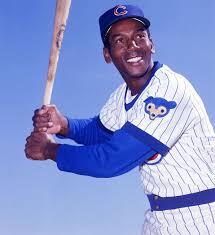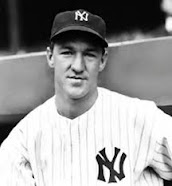Hey baseball fans!
Big news came out recently about the Negro Leagues being elevated to Major League status. A lot of people had a lot to say about the racial sensitivity that went into this move (which was called "correcting a longtime oversight" by the MLB), but I'm going to tackle the story from a different angle and discuss the ramifications it has for the Hall of Fame.
As I've said time and time again, Jackie Robinson and Larry Doby are not Hall of Famers solely because they're black. Sure, they broke the color barriers in the NL and AL, respectively, but because the National Baseball Hall of Fame is the most benchmarked of all the American sports halls of fame, I can't justify their induction by the color of their skins because, indeed, they were both insanely good. You can argue that Doby got propped up by his resilient status a little bit more than Robinson (Jackie is objectively the better player), but it's impossible to ignore Larry Doby's power surge of the 1950s in Cleveland. In other words, the dominant reason that Jackie Robinson and Larry Doby have permanent residencies in Cooperstown is because they could hit a baseball, plain and simple.
With the Negro Leagues finally getting the major league label after last week's MLB super-announcement, it got me thinking about a couple of things regarding judging players who played either most or all of their wonderful careers in the Negro Leagues. First of all, the move is going to motivate intense fact-checking and stats verification (which, as a future auditor, I am excited about on a reconciliation basis) to ensure that the stats from the time period elevated, 1920-1948, are correct. Statistical historians could uncover and/or verify a whole bunch of stats that were lost to Father Time, excavating the careers of forgotten Negro Leagues stars onto Hall of Fame ballots, which brings me to a second point. We're finally going to hear more about Negro Leagues players that already do have verifiable stats, like Oscar Charleston or "Cool Papa" Bell. In addition, Satchel Paige and Josh Gibson's numbers are going to be beefed up, along with other names of Hall of Famers that I can't even name off the top of my head because the league they played in was considered secondary until this year!
What I'm trying to say is that I'm tired of the talk of putting Negro League players in the Hall because they're black. It's not fair to the hard work that they put in on the field, the same work that's been put in by black players after the breaking of the color barrier. This move is going to motivate voters to put them in because they're good, which they are, and that fact is proven by Robinson and Doby, who made the transition from the Negro Leagues to Major League Baseball without much of a learning curve. There is more to this move than just recognizing the Negro Leagues as being legitimate. It's about acknowledging that the players, too, were the top ballplayers of a generation. Thanks for reading this post and I hope you enjoyed it. Check back soon for more of "all the buzz on what wuzz."























